Table of contents
- What is machine learning?
- How Does Machine Learning Work?
- Why Is Machine Learning Important?
- Application Of Machine Learning.
- Advantages of machine learning.
- Disadvantages of machine learning.
- Getting started on machine learning.
- Deep Dive Into the Essential Topics.
- Learn Comprehensively.
- Work on Projects.
- Learn and Work With Different ML Tools.
- Study ML Algorithms From Scratch.
- Choose a course in machine learning.
- Examples of platforms to learn machine learning.
- Conclusion.
What is machine learning?
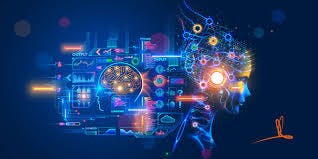 Machine learning is a branch of computer science and artificial intelligence (AI). Here, the emphasis is on leveraging data and algorithms to simulate human learning and gradually increase accuracy.
It is also a use of AI that makes it possible for systems to gain knowledge and get better over time without having explicit programming. The development of computer programs that can access data and utilize it to learn for themselves is the main objective.
Numerous machines are currently able to learn from real-world instances. Whether we are aware of it or not, machine learning is employed in many different applications, including self-driving cars, automated translation, picture recognition, and voice search.
Machine learning is a branch of computer science and artificial intelligence (AI). Here, the emphasis is on leveraging data and algorithms to simulate human learning and gradually increase accuracy.
It is also a use of AI that makes it possible for systems to gain knowledge and get better over time without having explicit programming. The development of computer programs that can access data and utilize it to learn for themselves is the main objective.
Numerous machines are currently able to learn from real-world instances. Whether we are aware of it or not, machine learning is employed in many different applications, including self-driving cars, automated translation, picture recognition, and voice search.
How Does Machine Learning Work?
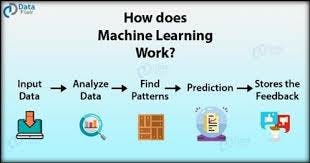 Machine learning relies on input, such as training data or knowledge graphs, to comprehend things, domains, and the connections between them, much to how the human brain acquires information and understanding. Entities must be defined before deep learning can start.
The first step in the machine learning process is to observe or collect data, such as examples, firsthand knowledge, or instructions. It searches for patterns in the data so that it can later conclude the supplied instances. The main goal of ML is to make it possible for computers to learn on their own, without aid from humans, and to adapt their behavior accordingly.
Machine learning relies on input, such as training data or knowledge graphs, to comprehend things, domains, and the connections between them, much to how the human brain acquires information and understanding. Entities must be defined before deep learning can start.
The first step in the machine learning process is to observe or collect data, such as examples, firsthand knowledge, or instructions. It searches for patterns in the data so that it can later conclude the supplied instances. The main goal of ML is to make it possible for computers to learn on their own, without aid from humans, and to adapt their behavior accordingly.
Why Is Machine Learning Important?
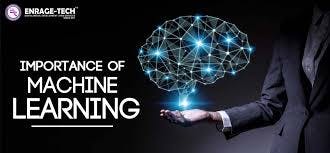 The idea of machine learning has been around for a while. Arthur Samuel, an IBM computer scientist and pioneer in artificial intelligence and computer games, is credited with coining the term "machine learning." Samuel created a checkers-playing computer program. The more the program was used, the more it used algorithms to forecast outcomes and learned from experience. Machine learning is a field that studies the research and creation of algorithms that can learn from and predict data.
Because it can solve issues at a speed and scale that cannot be matched by the human mind alone, ML has shown to be useful.
The idea of machine learning has been around for a while. Arthur Samuel, an IBM computer scientist and pioneer in artificial intelligence and computer games, is credited with coining the term "machine learning." Samuel created a checkers-playing computer program. The more the program was used, the more it used algorithms to forecast outcomes and learned from experience. Machine learning is a field that studies the research and creation of algorithms that can learn from and predict data.
Because it can solve issues at a speed and scale that cannot be matched by the human mind alone, ML has shown to be useful.
- Data Is Vital: Machine learning algorithms are essential to its success. Without being expressly taught to do so, ML algorithms create a mathematical model from sample data, also referred to as "training data," to make predictions or choices. This can highlight patterns in the data that organizations can utilize to enhance decision-making, maximize productivity, and collect meaningful data at scale.
- The Purpose Is AI: AI systems that automate workflows and find solutions to data-based business challenges on their own are built on top of machine learning (ML). It enables businesses to supplement or replace specific human competencies. Chatbots, self-driving cars, and speech recognition are examples of common machine learning applications you could encounter in daily life.
Application Of Machine Learning.
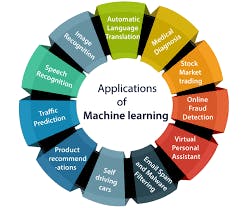
1. Image Recognition.
Image recognition is one of the most common applications of machine learning. It is used to identify objects, persons, places, digital images, etc.
2. Speech Recognition.
While using Google, we get an option of "Search by voice," which comes under speech recognition, and it's a popular application of machine learning. Speech recognition is a process of converting voice instructions into text, and it is also known as "Speech to text", or "Computer speech recognition." At present, machine learning algorithms are widely used in various applications of speech recognition. Google Assistant, Siri, Cortana, and Alexa are using speech recognition technology to follow voice instructions.
3. Product recommendations.
Various e-commerce and entertainment businesses, including Amazon, Netflix, etc., employ machine learning extensively to propose products to users. Because of machine learning, whenever we look for a product on Amazon, we begin to see advertisements for the same product while using the same browser to browse the internet. Google uses a variety of machine learning algorithms to assess user interests and makes product recommendations based on those interests. Similar to this, machine learning is also used to recommend TV shows, movies, and other entertainment options when we use Netflix.
4. Self-driving cars.
One of the most intriguing uses of machine learning is in autonomous vehicles. Self-driving cars heavily rely on machine learning. The most well-known automaker, Tesla, is developing a self-driving vehicle. To train the car models to recognize people and objects while driving, unsupervised learning was used.
5. Finance.
Banks, trading brokerages, and fintech firms use machine learning algorithms to automate trading and provide financial advisory services to investors. Bank of America is using a chatbot, Erica, to automate customer support.
6.Healthcare.
ML is used to analyze massive healthcare data sets to accelerate the discovery of treatments and cures, improve patient outcomes, and automate routine processes to prevent human error. For example, IBM’s Watson uses data mining to provide physicians data they can use to personalize patient treatment.
7.Fraud detection.
AI is being used in the financial and banking sector to autonomously analyze large numbers of transactions to uncover fraudulent activity in real-time. Technology services firm Capgemini claims that fraud detection systems using machine learning and analytics minimize fraud investigation time by 70% and improve detection accuracy by 90%.
8.Retail.
AI researchers and developers are using ML algorithms to develop AI recommendation engines that offer relevant product suggestions based on buyers’ past choices, as well as historical, geog, graphics, and demographic data.
Advantages of machine learning.
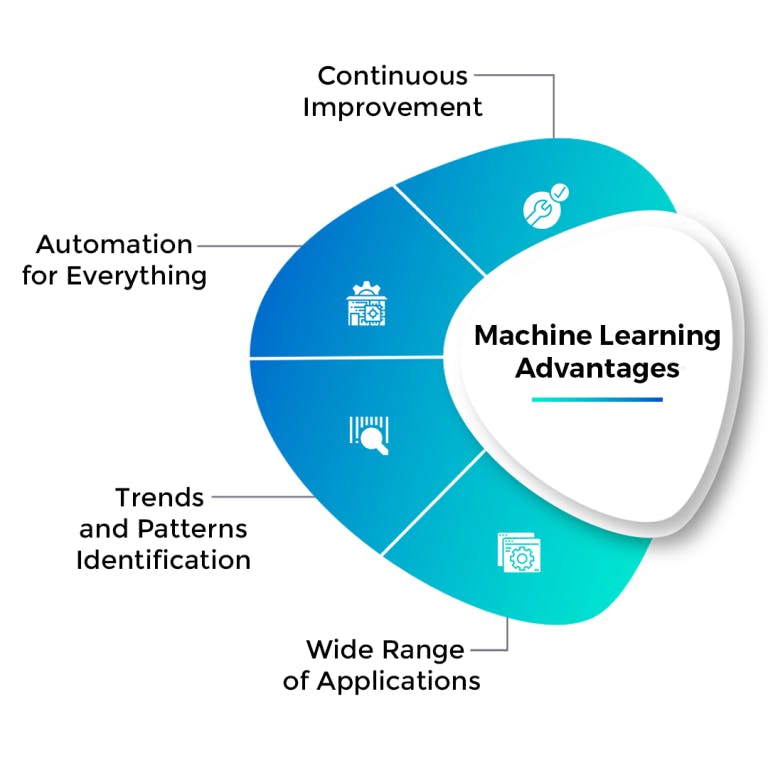
Continuous Improvement.
Algorithms for machine learning can gain knowledge from the information we provide. The model's decision-making accuracy and effectiveness increase with each fresh training as new data is made available. Every day, major companies like Amazon, Walmart, etc. gather a ton of new data. This vast volume of training data makes it easier to locate related products or increase recommendation engines' accuracy.
Automation for everything.
The ability of machine learning to automate various decision-making processes is a very potent tool. As a result, engineers have a lot more time to devote to more fruitful tasks. For instance, social media sentiment analysis and chatbots are frequently used in daily life. A chatbot immediately responds as first-level customer support whenever a negative tweet about a company's product or service is made. The automation provided by machine learning is revolutionizing the world in practically every way that we can imagine.
Trends and patterns identification.
This advantage is a no-brainer. All of us interested in Machine Learning technology are well aware of how the various Supervised, Unsupervised and Reinforced learning algorithms can be used for various classification and regression problems. We identify various trends and patterns with a huge amount of data using this technology. For example, Amazon analyzes the buying patterns and search trends of its customers and predicts products for them using Machine Learning algorithms.
Wide range of applications.
Machine Learning is used in every industry these days, for example from Defence to Education. Companies generate profits, cut costs, automate, predict the future, analyze trends and patterns from past data, and many more. Applications like GPS Tracking for traffic, Email spam filtering, text prediction, spell check and correction, etc are a few used widely these days
Disadvantages of machine learning.
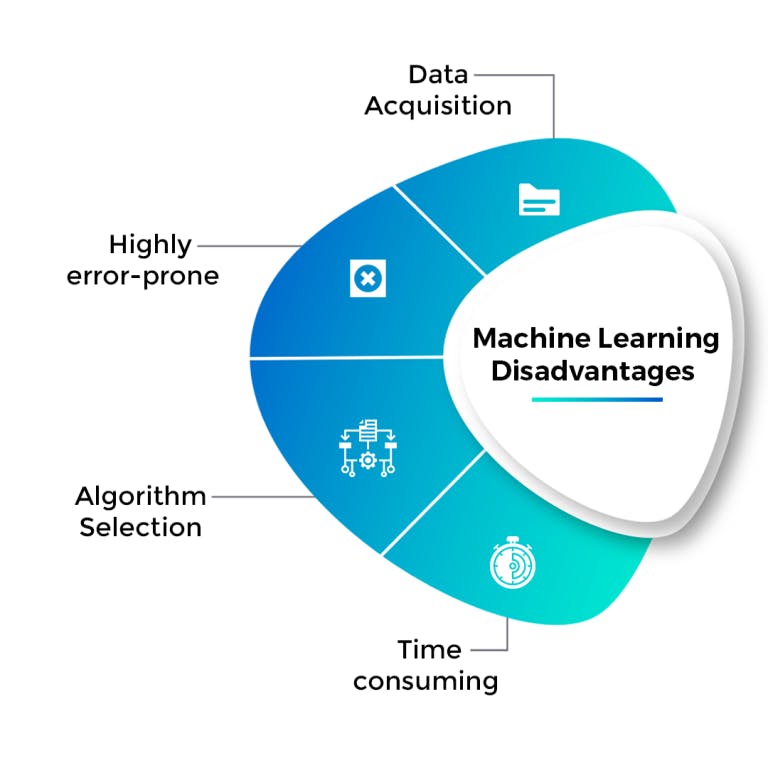
Data Acquisition.
One of the most painful points in the field of Data Science and Machine Learning is the acquisition of data. Additionally, collecting data comes with a cost. Also, it so happens that when we are collecting data from surveys, it might contain a large volume of bogus and incorrect data. Many times we do face a situation where we find an imbalance in data which leads to poor accuracy of models. These reasons make data acquisition a massive disadvantage.
Highly error-prone.
“Garbage In Garbage Out” is the thing to always remember in this technology. The data we push in the models as training data must be clean and accurate for the problem we are solving. Being easy to automate processes using Machine Learning, it sometimes does happen that data in between is improper. This might cause incorrect results or errors. For example, we might witness a situation where customers may be classified as defaulters or customers are recommended products not related to their search history or patterns.
Algorithm Selection.
A Machine Learning problem can implement various algorithms to find a solution. It is a manual and tedious task to run models with different algorithms and identify the most accurate algorithm based on the results. This is a disadvantage.
Time-consuming.
Machine Learning models are capable of processing huge amounts of data. Larger the volume of data, the more time to learn from data and process it also increases. Sometimes it might also mean additional resources for computing.
Getting started on machine learning.

Discover the prerequisites.
You must first comprehend the foundational ideas of machine learning before learning about its theory and applications. By setting up a structured learning route, this foundation will assist you in understanding ML fundamentals more quickly.
Programming.
 Every machine learning algorithm is coded. The ability to program in Python, R, Bash, or Java is therefore a requirement for any aspirant ML engineer. Python has become the most popular programming language in recent years, especially among newcomers. It has the most supported libraries, the simplest syntax, and rich built-in functions.
The ideal method to begin using machine learning is with a beginner or crash course in Python if you have no prior programming knowledge. You must learn how to extract, process, and evaluate data once you have learned its fundamental features. A part on effective data analysis will be included in the majority of ML and data science courses.
Every machine learning algorithm is coded. The ability to program in Python, R, Bash, or Java is therefore a requirement for any aspirant ML engineer. Python has become the most popular programming language in recent years, especially among newcomers. It has the most supported libraries, the simplest syntax, and rich built-in functions.
The ideal method to begin using machine learning is with a beginner or crash course in Python if you have no prior programming knowledge. You must learn how to extract, process, and evaluate data once you have learned its fundamental features. A part on effective data analysis will be included in the majority of ML and data science courses.
Statistics and Probability.

Statistics and probability are key concepts in the ML industry because machine learning engineers deal nearly solely with data and its predictions. The probability of compound events happening is the ultimate determinant of all data-driven judgments. Additionally, descriptive statistics make it possible to convert unstructured data into knowledge that can be utilized to create and improve machine learning (ML) algorithms. All the metrics and methods required to evaluate the correlations between data distributions are included in statistics and probability. A thorough comprehension of these topics enables you to comprehend intuitively regression models based on frequentist statistical theory (for smaller data sets) or contemporary machine learning theory (for larger data sets).
Data Tackling.
You'll also need to develop experience working with massive amounts of data. You can significantly increase the memory and time efficiency of your code by being able to manage data. Cleaning your data (data wrangling) and estimating the set's overall structure are prerequisites before you can create or choose a model for data analysis. You can stay clear of future hazards and mistakes by having a thorough understanding of data modeling operations. You will also be able to create more efficient algorithms more quickly. Predictive modeling and analytics are more advanced ideas that you can start experimenting with as you get more knowledge about the nature of the data and the patterns that need to be found.
Deep Dive Into the Essential Topics.
Once you’ve grasped the underlying concepts, you will start to understand the capabilities and reasoning behind machine learning models. The final step before you can start contributing to the ML/AI community is to gain an end-to-end understanding of the sequence of operations in data science. This will help you understand how the data, ML, and software code pipelines interact with each other to create a complete product.
Practice Machine Learning Workflow.
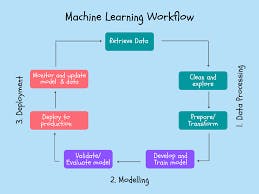 In a strict sense, the machine learning pipeline begins with data that has been filtered, cleaned, and optimized for ML processing. In reality, ML engineers spend a lot of work organizing data to prevent noisy or missing input from impairing the model's accuracy. The initial model code can be written once the data has been properly divided into training and test sets. Model engineering, evaluation, and packing fall under this category.
In a strict sense, the machine learning pipeline begins with data that has been filtered, cleaned, and optimized for ML processing. In reality, ML engineers spend a lot of work organizing data to prevent noisy or missing input from impairing the model's accuracy. The initial model code can be written once the data has been properly divided into training and test sets. Model engineering, evaluation, and packing fall under this category.
The model selection phase is determined by the model evaluation step using specific performance criteria like recall and precision. The process' "prototype" step is finished as the model is trained and improved over time. The model is subsequently deployed as the procedure transitions to the "production" stage. The model's performance is evaluated in the last stage by examining the insights it yields and keeping an eye on its predictions.
Work on Real Datasets.
No matter what industry you plan to work in, you will need hands-on experience with real data to sharpen your skills. All real data is somewhat flawed, so it provides an excellent opportunity to learn about the typical problems and solutions associated with data manipulation. Thanks to the incredible ML community, there are thousands of open-source aggregated datasets available to the public.
You can easily find computer vision data, climate change data, biological datasets, government databases, geographical/geospatial data, and even FBI crime data to use for your project. If you are new to handling data, you might want to select a smaller dataset or pick the most relevant information in a larger dataset. Make sure that the dataset you choose is suitable for beginners—it should have good quality data that is labeled consistently.
Learn Comprehensively.
Practice ML Workflow.
 When learning ML from start, it's crucial to keep the wider picture in mind, as with most developing subjects. You need to learn about the various tools and packages that are unique to ML/data science; it is not sufficient to understand only the fundamentals of a programming language. For instance, if you're learning Python, you'll need to develop a thorough understanding of the pandas and NumPy data analysis, manipulation, and visualization tools.
Instead of starting from scratch and decoding methods, you should concentrate on the uses of the functions and algorithms in the sci-kit-learn library. Then you can advance to some of the most complex subjects, such as deep learning, and neural networks. Consider how your knowledge might add value to a business as you expand your portfolio further and focus on specialties. And think about participating in a system of learning that is driven by the community, like competitive coding. This will enable you to stay current with the most in-demand skills and the most recent developments in the field.
When learning ML from start, it's crucial to keep the wider picture in mind, as with most developing subjects. You need to learn about the various tools and packages that are unique to ML/data science; it is not sufficient to understand only the fundamentals of a programming language. For instance, if you're learning Python, you'll need to develop a thorough understanding of the pandas and NumPy data analysis, manipulation, and visualization tools.
Instead of starting from scratch and decoding methods, you should concentrate on the uses of the functions and algorithms in the sci-kit-learn library. Then you can advance to some of the most complex subjects, such as deep learning, and neural networks. Consider how your knowledge might add value to a business as you expand your portfolio further and focus on specialties. And think about participating in a system of learning that is driven by the community, like competitive coding. This will enable you to stay current with the most in-demand skills and the most recent developments in the field.
Work on Projects.
Any ambitious ML engineer must work on their projects. You need practical experience to distinguish yourself from the sea of inexperienced candidates in the cutthroat ML market. Employers prefer candidates having a track record of using ML tools and apps themselves. Engaging in an autonomous project aids in translating your theoretical understanding into a useful strategy. For those who are new to the field, the trial-and-error process of developing your idea presents a steep learning curve.
You can work on a staggering array of projects to enhance your machine learning abilities. Examples of beginner-friendly machine learning projects include sentiment analysis of product reviews, stock price forecasting, object detection, and even music and movie recommendations.
Choose Based on Your Interest.
While this might seem like an obvious or optional suggestion, you should select a topic you are truly interested in. When you start working on your first project, you are bound to make mistakes, especially if you’ve started from square one. These errors can become frustrating over time and you might not be able to make progress as quickly as you’d hoped. When this happens, it helps to have a topic that you genuinely care about.
Many aspiring ML engineers give up on their projects because of how tedious the process can be. You need to remember that learning from experimentation with different tools and strategies is the very goal of your first ML project. Spend some time going over different project options, their datasets, and the predictions they enable. Then pick the project that gets you excited about building a model for its base predictions.
Work on Basic Projects.
Never undervalue the level of knowledge needed to finish an ML project. You will need to go through a lot of trial and error even after you have learned the foundations before you can create a clear plan. Therefore, it's crucial to select a project that fits your abilities and skills. Beginner-level projects include building models for chatbots, picture recognition, or housing prices, whereas advanced ML projects use deep learning, progressive AI, or neural networks to build their models. Always start as a beginner with a project that is relatively easy to complete and will help you develop new skills. Choose a project that is not more difficult just because it might seem better in your portfolio.
Learn and Work With Different ML Tools.
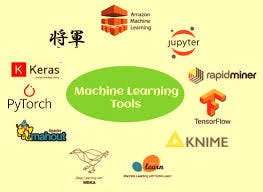 ML tools and packages are currently offered in an incredibly wide range. The combinations are essentially unlimited, ranging from data gathering and preparation to model creation and application deployment. Your best bet as a newbie is to stay with tried-and-true tools and packages with validated functionality. Of course, the type of model and prediction you're attempting to construct will also influence the tools you choose. However, a wide variety of tested tools deliver great results for the vast majority of use situations.
Some of the most popular ML/AI tools trusted by experienced professionals are:
ML tools and packages are currently offered in an incredibly wide range. The combinations are essentially unlimited, ranging from data gathering and preparation to model creation and application deployment. Your best bet as a newbie is to stay with tried-and-true tools and packages with validated functionality. Of course, the type of model and prediction you're attempting to construct will also influence the tools you choose. However, a wide variety of tested tools deliver great results for the vast majority of use situations.
Some of the most popular ML/AI tools trusted by experienced professionals are:
- TensorFlow
- Auto-WEKA
- KNIME Google Cloud AutoML
- BigML
- Scikit-learn
- Azure Machine Learning Studio
- Amazon Machine Learning (AML)
- Accord.NET
- Many of these tools come with advanced predictive analysis frameworks and even pre-trained models to build on. Working with different tools and environments will give you a deeper understanding of the methods used to optimize for specific applications.
Study ML Algorithms From Scratch.
You will know the necessary at this point to comprehend how ML algorithms are implemented in their entirety. But before you can completely grasp ML, you still need to delve into the inner workings of particular algorithms. High-level mathematics will likely be used in the most extensive explanations. You can stick to step-by-step instructions written in Python, R, or any other programming language if you don't like descriptions that involve a lot of math.
By the end of your coursework, you will be able to build a variety of linear, nonlinear, and ensemble algorithms as well as comprehend the machine learning approaches used to load and prepare data.
The full range of topics, including data scaling, baseline models, algorithm test harness, linear regression, logistic regression, and KNN, should ideally be covered.
Choose a course in machine learning.
One of the greatest ways to study ML from scratch is to adhere to an organized program or course. Numerous on-site and online courses are offered due to the industry's high demand. Any step of your learning can include taking an ML/AI course. You can develop specialized skills in more advanced topics or acquire momentum when you first start by taking courses.
Aim to enroll in a course with a cutting-edge curriculum that emphasizes in-demand abilities. Before making a choice, it is important to evaluate additional aspects including possibilities for capstone and portfolio projects, and community and mentor support, and these.
Examples of platforms to learn machine learning.
Conclusion.
Automating the creation of analytical models is the goal of machine learning, which also enables computers to learn from data without explicit programming. To put it another way, machine learning is an effective technique for concluding data. The ability will still be useful in the future.
